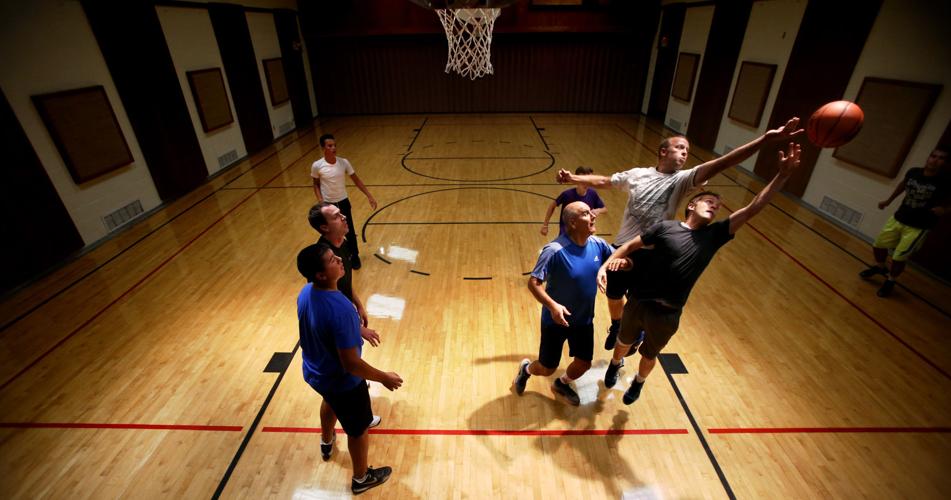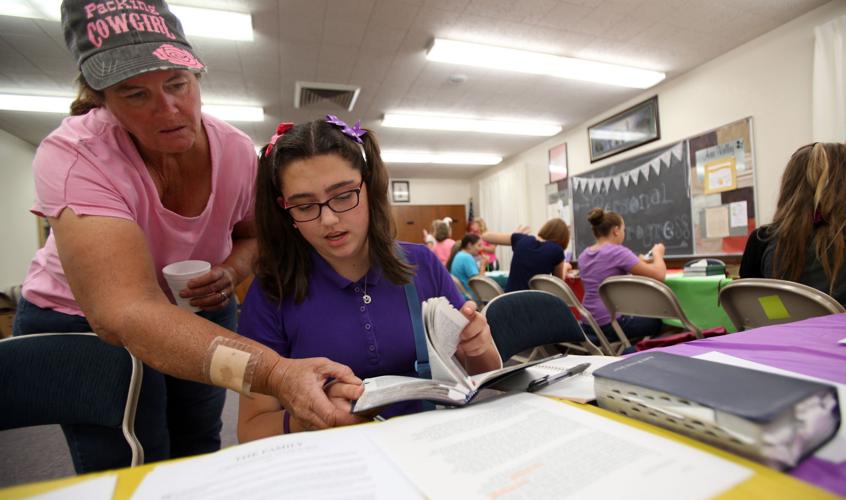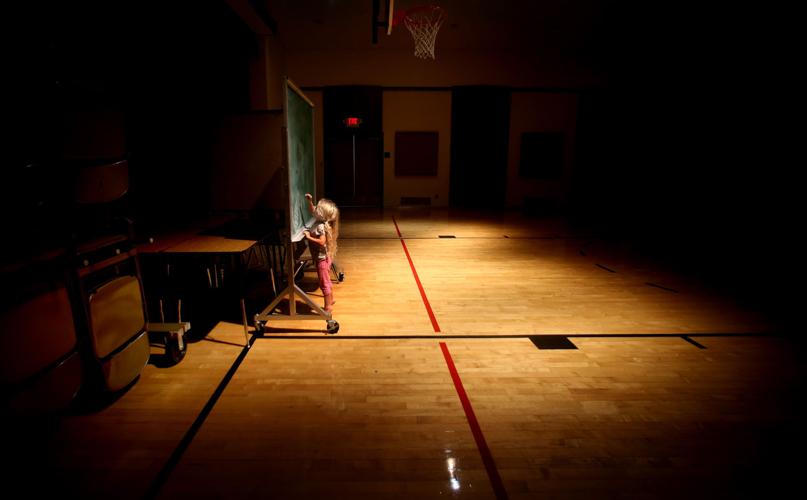The new temple for the Church of Jesus Christ of Latter-day Saints looms large before the Catalina Mountains, silver dome glinting in the sunlight, concrete walls appearing to rise from the saguaros.
The 38,200-square-foot structure means Mormons in Tucson and Southern Arizona will no longer need to trek to Mesa or Gila Valley for temple visits.
It also means Mormon communities in Tucson and surrounding areas have enough active members to justify construction of Arizona’s sixth LDS temple. Church leaders in Salt Lake City have not yet announced an opening date, but there are hopes for some time in 2017.
In 2015 — the year church leaders broke ground for the temple — the Tucson area saw the opening of a new meetinghouse in Vail and creation of two stakes, which are comparable to dioceses.
Dana Staggs, 54, is a lifelong member of the church and remembers when Tucson had four buildings and four wards, or congregations, organized under one stake.
The area today has eight stakes, and more than 30,000 members of the church live here and in St. David and Sierra Vista, according to figures provided by Debbi Weitzell, a media relations coordinator for the church in Tucson.
Tracking trends
Tracking growth within the LDS church is no easy task, said Matt Martinich, a Colorado-based researcher who has studied Mormon growth trends since 2002. The data he has gathered through his blog, “LDS Church Growth,” and as project manager for the Cumorah Foundation, an online initiative studying these patterns, comes largely from surveys. The church itself shares less data than he would like.
In tracking trends, the Cumorah Foundation reported membership growth of 0.7 percent in Arizona last year, down from figures that have hovered around 1.5 and 2 percent in the last 10 years. A one-year dip is no big deal, Martinich said. It could indicate the increasing influence of secularism, or it could just mean church leadership dropped some inactive names from membership lists.
“Most temples are indicative of growth in an area and that (members) are able to handle a temple and there is enough demand to support a temple,” he said.
Temples, like meetinghouses, are run by volunteers, so an area needs to have enough active members to keep the temple operating.
Have faith
George Alexander, 62, remembers the faith members demonstrated during construction of a meetinghouse in Marana farmland.
Two years a convert at the time of the building’s construction in 1978, Alexander recalls its dedication as a “very spiritual experience.” The donation of both finances and labor by church members moved him. He remembers about 100 to 150 people involved.
“When they built that building in 1978, the headquarters of the church in Salt Lake City wanted to know why they wanted to do that,” Alexander said. “The leaders here said, ‘We’re going to have a stake here someday,’ and 40 years later it happened.”
The Marana Stake was organized last year.
Alexander saw the town’s Mormon community explode as subdivisions provided alternatives to farmland. Young families came, drawn to the “town-type atmosphere,” he said.
Now, the Marana Stake consists of about 2,500 people, six wards and one branch. Alexander is the first counselor to the stake’s president, meaning he, along with the president and a second counselor, leads this stake. The congregations do not all meet at the Marana meetinghouse.
As the church grows, wards and stakes are created and divided to keep congregations from becoming too large. The idea is that smaller congregations make it easier to encourage active membership. The ideal size of a ward is 350 to 450 members in an area like Tucson, said Elder Raymond Heyman, a regional church leader called an Area Seventy.
While serving as ward bishops, both Staggs and Alexander recall congregations growing beyond 700 and 800 members. Reorganization seeks to prevent that.
“The church in Arizona and the church as a whole has been experimenting with creating congregations with a certain number of active members,” Martinich said. “That helps improve the activity rate in those congregations. It’s not too small, not too big.”
It takes a village
An emphasis on active members can influence the number of converts. Research indicates that about 6 percent of Arizona’s population identifies as Mormon, making it “one of the highest baptizing areas for the LDS church in North America,” Martinich said.
The Pew Research Center’s Religious Landscape Study puts the percentage of Arizona adults identifying as Mormon in 2014 at 5 percent — higher than most states, tied with Alaska and outpaced only by Wyoming at 9 percent, Idaho at 19 percent and Utah at 55 percent. Several other states come in at 4 percent. Twenty-one percent of Arizona adults identify as Roman Catholic.
Most of the growth in Arizona seems to originate on soccer fields or around kitchen tables. Members — not traveling missionaries — lay the groundwork, influencing friends and family, especially in areas with a significant Mormon presence, Martinich and Heyman said.
That’s how Sarah Whaley, 38, came to the faith.
After veering from her religious upbringing, a desire to provide her own three children a stable foundation drew her back to the pews. She and her husband church-hopped for years without finding a match for their family.
At the same time, she reconnected with old friends. She noticed that the kids lived to a higher set of standards than other children.
“It was something I wanted for my own kids down the road, the decisions they make when faced with peer pressure,” said Whaley, who lives in the Marana area.
She started as a skeptic and began asking questions “more out of intellectual curiosity than out of a true desire to convert,” she said.
For more than a year, she badgered missionaries with questions and attended the first hour of Sunday sacrament meetings before skipping out on the other two hours.
In July 2015, she was baptized, and though her husband has not converted, Whaley said he supports the church as a place to raise their kids.
“I think there is that whole idea that it takes a village ... and I think Mormons do that very well...” she said. “I had back surgery and people brought me meals and took my kids to school, and I didn’t have to ask. People started showing up.”
Tucson is no Mesa, which has a higher concentration of Mormons and the state’s first temple, but “the church in Tucson is established and continuing to grow,” said Heyman, the regional church leader.
Tucson’s Mormon roots date back to the mid-1800s, when the Mormon Battalion marched into Southern Arizona, ordered to bolster U.S. efforts in the Mexican-American War.
That trek trailblazed development for future Mormon communities in the area — including in St. David and central Tucson, where a branch was organized in 1910.
“Arizona tends to be a stronger state when it comes to the Mormon presence, and that has a lot to do with the fact that Arizona was colonized by Mormons,” said Konden Smith, a visiting assistant professor of religious studies at the University of Arizona.
Groups of Mormon settlers made their homes in places such as Mesa, Gila Valley and St. David in the late 1800s. Such places often maintain LDS cultural influences.
Smith specifically studies American religious history and has seen conservative traditions such as Mormonism grow in the 20th and 21st centuries while simultaneously battling public opinion for its stances on issues such as racial exclusion up until the 1970s and LGBT acceptance today, he said.
The pinnacle of growth
When the announcement about the Tucson temple came in 2012, the Mormon community here exhaled.
Finally.
“It was highly anticipated, “ said Marana Stake leader Alexander.
Just like that Marana stake.
“That’s a bold statement to say, ‘We’re going to have a stake,’” said Alexander, a rancher. “Back in those days, you’re looking at a community that was cotton fields and farm fields and a couple of schools and a few cows. It just kept growing ... Somewhere along the line, it became a good place for young Mormon families to want to raise their children.”
Staggs, a lifelong Mormon who lives in Vail and is a media relations coordinator for the new Tucson South Stake, saw something similar — especially as Raytheon employees moved their families into the area.
For him, all of this growth culminates at the temple.
“It’s a reminder to me of the roots that I came from when it was just four wards in the city,” he said. “That wasn’t close to large enough to have a temple.”
Soon, Tucson Mormons qualified to enter the temple will be able to do so in their hometown — an answer to prayer for many. The temple is considered sacred space by Mormons.
“A temple brings forth an internal revival for the church in the local area because you have this new excitement or enthusiasm that is brought into local congregations,” Smith said. “It’s a type of rally cry ... and a symbol to look to and say, ‘We are established, and we are legitimate here.’”








